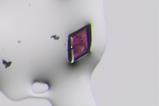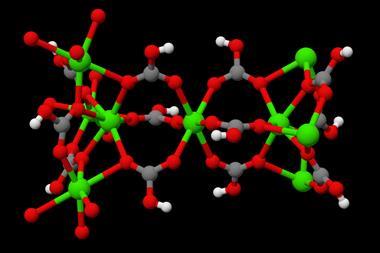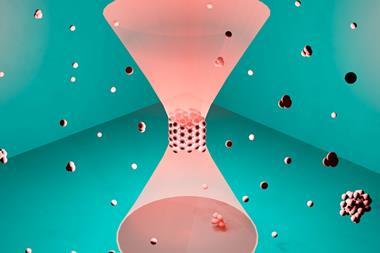
Studies of ice as it is found in most of the universe have revealed it is a lot more complex than previously thought. Scientists at University College London and the University of Cambridge in the UK, have now found evidence that, while it does not have the regular repeating arrangement of atoms of fully crystalline materials, neither does it have the completely random arrangement of amorphous materials.
‘The crystalline state has got zero complexity, right? It’s just one building block after the next,’ says Christoph Salzmann at UCL, a corresponding author alongside Angelos Michaelides at the University of Cambridge. While complete disorder doesn’t have any complexity either, ‘as you allow for some order to develop within the disorder, this is where complexity arises’, he adds. ‘We now fully appreciate the complexity of the material, but this leads us on to the next steps of investigation.’
‘In a sense, the ice that we know on Earth is really a cosmic curiosity because we’ve got the high temperatures here,’ Salzmann tells Chemistry World. On Earth, water generally freezes into a crystalline structure, but in space, water accumulates on dust particles molecule-by-molecule. It was thought that it was too cold for the molecules to find the energy needed to organise into a crystal so the assumption has been that its structure is completely amorphous.
Over the past decade or so, some scientists have had their doubts about the accuracy of this purely amorphous description, among them Salzmann. However, the calculations have been beyond most computers until recently, as the simulation needs to contain enough water molecules for thousands of grains of ice to form, each of them containing thousands of water molecules.
Fortunately, not only have processors become faster, but they also have algorithms to distribute calculations over several processors in parallel. As a result the researchers – among them Michael Davies, then a researcher at UCL and University of Cambridge, who worked on the computational side of the project – could calculate the diffraction properties of materials with ice crystals formed at different rates – which equates to the size of the crystals formed – and compare them with experimental values from experiments on low-density amorphous ice. The structure they landed on was of numerous randomly oriented tiny ice crystals with thick amorphous regions between them.
Calculating the arrangement that results when a full polycrystalline version of ice with no amorphous regions is allowed to relax also led to the same structure of tiny grains with thick amorphous regions in between them. ‘It comes down to basically ice being a soft material,’ says Salzmann, noting that water is made of very flexible molecules. As a result, the regions between crystals at different orientations are pulled out of their crystalline structure into ‘disordered, more complex structures’.
Experiments comparing how low-density amorphous ice produced by deposition crystallises, compared with low-density amorphous ice made by dropping the temperature of liquid water very fast also provided evidence of nanocrystals in the amorphous state. ‘If something is completely disordered,’ says Salzmann, ‘if you crystallise it, it should always give the same thing, but that’s not what we found.’ The structure that emerged was found to depend on the parent amorphous material.
This discovery holds implications for origin of life theories based on biomolecules arriving on Earth from outer space in ice grains on meteorites. Although it is possible the biomolecules could still travel to Earth that way, thanks to the thick amorphous regions, as ‘nothing is soluble in crystalline ice’ there is less room for biomolecules.
Alexander Shluger, who was not involved in this work and heads a different group at UCL focused on the theoretical study of the structure of matter, suggests that this paper ‘will strongly contribute to the ongoing discussion of atomic structure of non-crystalline solids with a unique and insightful perspective on the structure of low-density amorphous ice’.
References
M B Davies et al, Phys. Rev. B, 2025, 112, 024203 (DOI: 10.1103/PhysRevB.112.024203)

















No comments yet